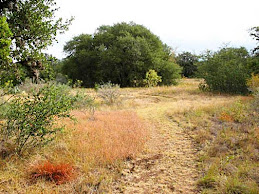Living so close to Mexico as I do, we won't be seeing too many signs of fall until October or even November. Mostly we are feeling the signs of fall. After an abnormally hot summer, with three entire months of temperatures between 103-110, having 80 degrees at noon feels rather pleasant!
So instead, I will show you some signs of September color where I live. Your life has probably been touched by this stuff, and you never knew about it. This is the time of year that the female Cochineal insect (Dactylopius coccus) lays a white fluffy substance containing larvae on the pads of our Prickly Pear Cactus (Opuntia sp.).
When this white fluff is collected...
...and crushed...
...it produces a natural red dye that is more stable than synthetic colors. The Cochineal is native to South America and Mexico (and obviously this part of Texas which once belonged to Mexico). Cochineal dye was used by the Aztecs and Mayas, and once was the second largest commodity after silver exported from Mexico. The Navajos still use it to dye wool red for their rugs.

After the Spanish conquest, it was exported to Europe, and even was so valuable as to be quoted regularly on the London and Amsterdam Commodities Exchange.
England, wanting to control their own source for the coloring, transplanted it from Brazil to Australia in 1787. Can you guess the use for which the British wanted it?
That's right...there would have been no Red Coats without this little insect and its white fluff.
Chances are very high that you've worn and consumed this insect in your daily life! It is currently used in both the food and cosmetic industry. You'll see it listed as carminic acid, red color E120, and carmine. It's found in alcohol and soft drinks, meats, cheeses, pastries, jams, lipstick, blush, face powder, eyeshadow, hair coloring, oil paint, water colors just to name a few.
Each year people consume an estimated 1-2 drops with their food. This could be of concern if you are vegetarian, vegan, Jewish, or Muslim. Don't like the idea of consuming crushed insect larvae? A new U.S. Food and Drug Administration regulation will require all foods and cosmetics containing cochineal to declare it on their ingredient labels as of January 5, 2011. Still, with cochineal red being one of the safest colorants, I kind of doubt there will be much information letting people know its source.
For some classic signs of fall, visit Sunday Stills!





.jpg)









